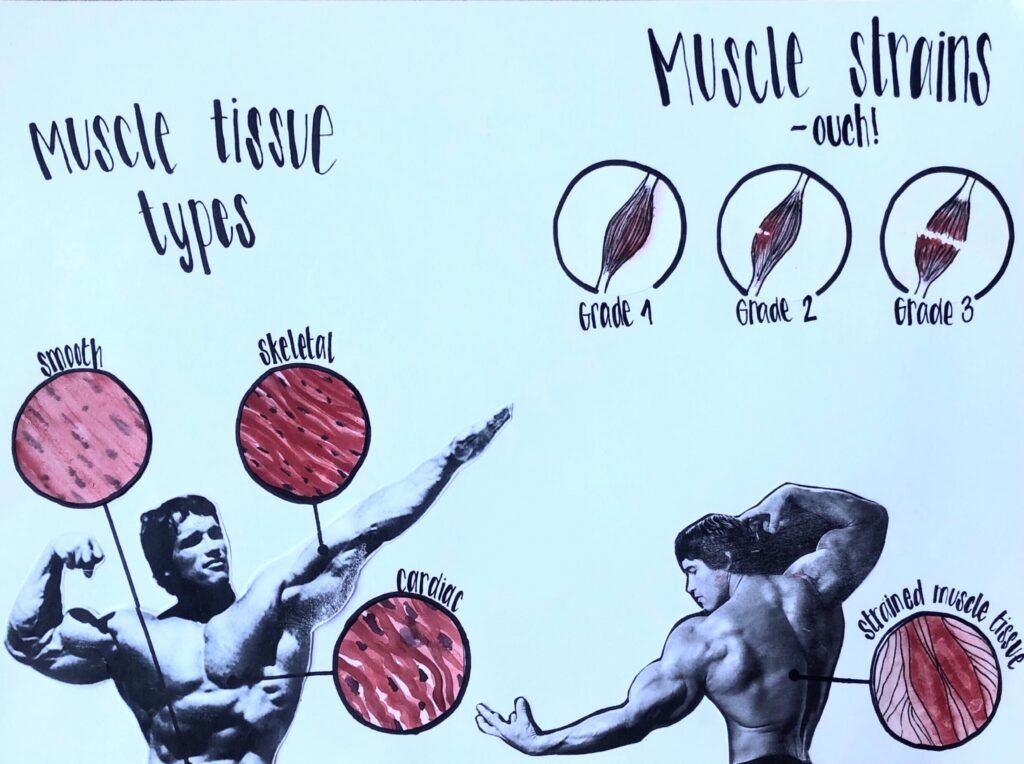The human body has three different types of muscle tissues, skeletal, smooth, and cardiac. When muscles are overworked, one can suffer from muscle strains. To illustrate the different muscle tissues as well as muscle strains, I used photographs of Arnold Schwarzenegger as an example and created a collage!


Jule Burnette created this collage of different muscle tissue types and various muscle strain grades. Arnold Schwarzenegger is modeled here as an example of how bodybuilders can alter their appearance due to the human body’s muscle tissues. The three different muscle tissue groups are skeletal, cardiac and smooth muscle. They perform different functions, can be found in different areas of the body and have different appearances. Cardiac muscle is located in the heart walls and have branching chains of cells. Smooth muscle is located in hollow organ walls and have spindle-shaped cells. Skeletal muscles are found attached to bones and have striations with cylindrical-shaped cells. These muscle functions include movement, supporting body posture, stabilizing joints and contracting for heat generation.
With these various functions, muscles can be damaged from overwork. Pulled muscles, or muscle strains, are an example of damaged muscles that are overstretched or even torn. Muscle strain severity can be classified from grade 1 mild damage to grade 2 for severe strains and finally grade 3 which are torn muscles or tendons. These can be found in areas of the body that are commonly overused or see more weight-bearing activity such as the leg, shoulder, neck and lower back. To prevent muscle strain it is best to do a proper warm-up or stretching before strenuous activity. These activities that can trigger muscle strain include running, throwing, or heavy lifting. Over-exercising can also lead to overuse of muscles which can also be a contributing factor to muscle strain.